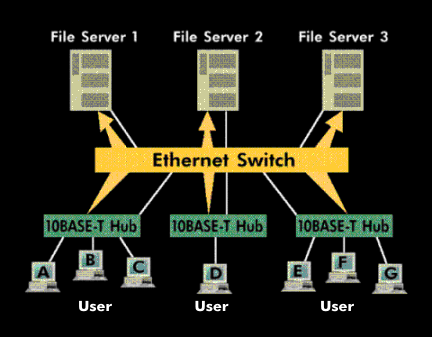LAN switching
LAN switching eliminates performance bottlenecks, essentially transmission bandwidth bottlenecks, in existing LANs and supports the creation of virtual networks. LAN switching offers advantages when segmenting networks that have become too large into smaller LAN segments. This is why it is also referred to as segment switching.
LAN switching prevents the transmission of locally relevant data packets to the other connected LAN segments and thus fulfills the functionality of bridges. In addition, it can support multiple parallel communication relationships between segments.
LAN switching distinguishes between three procedures, per- port or configuration switching, frame switching and cell switching. In the former method, individual ports are switched to different LAN segments.
In frame switching, this designation is intended to distinguish Ethernet switching and token ring switching from WAN technologies with Fast Packet Switching( FPS), the conventional Ethernet frames and token ring frames are retained as transport units, but the shared- medium procedure is replaced by a point-to-point connection.
The third method, cell switching, brings about the replacement of traditional data packet switching in favor of cell technology with fixed-size cells. In this technology, which forms the basis for ATM, each subscriber has a dedicated connection with a specific quality of service that can be used for voice, data and moving image transmission.

